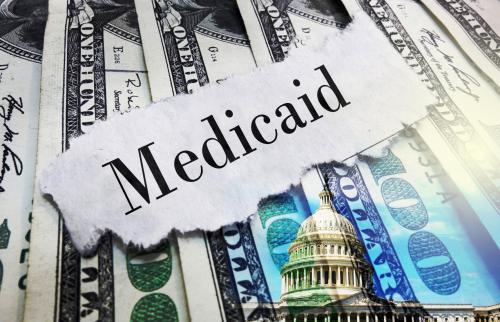


Congress is currently working through the reconciliation process—including drafting legislation that will only require a simple majority for Senate approval—that will dramatically cut government spending. While the rule for reconciliation is different in the House and the Senate, an early House version of the bill would cut spending by $880 billion, and a significant portion of those cuts are expected to come from health care related spending.
Experts in Brookings’ Economic Studies program have explored some of the potential cuts and their impacts in a number of new analyses. Explore key takeaways below and follow the links to the full reports.
“The U.S. uninsured rate has never risen as far, as fast as it will if the House bill and other looming policy changes affecting insurance coverage take effect; the resulting increase would erase almost three-quarters of the decline in the uninsured rate since the Affordable Care Act’s main coverage provisions took effect at the start of 2014.”
Sherry Glied and Dong Ding
“…if the provisions are to save substantial federal money, they will have to disenroll those they promise to protect, either by disenrolling many more low-cost beneficiaries, drawing from the large group who work more than the 80 hours a month threshold, or by disenrolling much more expensive beneficiaries, drawing from the group who report activity limitations but have not yet qualified for Supplemental Security Income (SSI).”
Matthew Fiedler and Loren Adler
9.5
million
The number of people who will lose their health insurance by 2034 under proposed House Republican policies, according to Congressional Budget Office analysis.
“… the overall story is simple: The plan saves money mainly by removing millions of people from coverage, while offering no alternative means to insure them.”
Gopi Shah Goda, Lily Nevo, and Richard G. Frank
Key Takeaways:
“40 years ago, one of every four children in America, about 25%, had no health insurance, today it’s 5%. Among the population as a whole, the share of the population that’s uninsured has been cut in half primarily because of the Affordable Care Act enacted back in 2010. And I think this is particularly relevant because if we cut deeply into the key programs that underlie this progress like Medicaid and SNAP—which we used to call food stamps—then I think it’s inevitable that we will see a reversal of a substantial part of the progress. We’ll see poverty go back up, and we will clearly see, if you cut Medicaid substantially, you’re going to have millions more people who lack health insurance. So that’s part of the issues and the concern with the reconciliation process upon us.”
Robert Greenstein joined Brookings’ “The Current” podcast to discuss the potential impact of cuts to safety net programs resulting from the reconciliation process.
“… resuming CSR payment without reinvesting the savings, as House lawmakers appear to be considering, would sharply increase what many middle-income Marketplace enrollees pay for their health insurance coverage.”
Related Content

Gopi Shah Goda, Lily Nevo, Richard G. Frank
May 8, 2025

Christen Linke Young
May 9, 2025

Matthew Fiedler
April 30, 2025

Thomas Buchmueller, Helen Levy
May 1, 2025